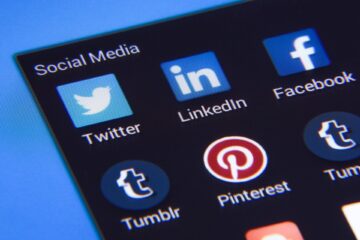![]()
Introduction:
For the past decades, the patent system has been the target of extreme critique. Occurrences like patent thicketing, patent infringement, anti-commons principle, and, more broadly, patent reliability as well as the system’s strategic usage have all generated concerns regarding the health of the system. These situations often form part of the incentive to demand full security requirements in the global arena. Patents are now an increasingly bigger company with more and more wealth at stake as time progresses. The compensation that courts pay at trial and the forms in which courts measure such damages lay at the heart of that company. And the legal principles intended to regulate patent claims are extremely vague and uninformative.
The growth of private free enterprise relies on the encouragement of the production of technologies and the defence of free open markets. The federal government has worked to protect these targets by acknowledging the value of these influences and understanding the relevance of their continuous presence. The exclusive right of the patent holder to his innovation would breach the rule of free competition governing the antitrust laws without statutory safeguards. Even so, with that defence, the action of the patentee was not able to go unregulated, because his patent rights were limited.
Landmark Cases
In 2012, through patent trials, the three highest court rulings passed down in the United States come through, Carnegie Mellon earned a $1.17 billion judgment against Marvell Technology Group[1] for violating patents on integrated circuits, Apple won a $1.05 billion judgment against Samsung[2] for its mobile and tablet patents, and Monsanto was compensated $1 billion in a genetically modified soybean patent case involving DuPont[3]. Five other companies have won more than $100 million in damage rulings. Pfizer dodged breaking the record for the highest patent verdict in existence the next year by settling charges for $2.15 billion against two prescription drug companies.[4]
The Claimants won verdicts in tens of millions of dollars between any of these title figures, and even other patent owners reached royalty deals with millions more outside of lawsuits. It is difficult not to take interest with enough nine- and ten-figure convictions: patents have become an ever-larger company with more and more capital at stake. The compensation that courts pay at trial and the forms in which judges measure such damages lay at the heart of the company.
Rights
Proprietary rights are a classic topic in violation of rights cases. Traditionally, the notion is used to govern the way one may use one’s garden in comparison to neighbours. A lot of case law on the subject originally arose from those cases. As ownership rights are patent rights, the implementation of the idea in patent law should be inevitably smooth. In Germany, for example, patent rights are deemed, as provided under Article 14 of the Constitution, to be a kind of personal property.[5]
Interestingly, cases concerning violation of rights claims in patent law really aren’t known to date. It is likely to see only principles similar to those found in the US patent system: patent infringement and inequitable acts. Therefore, the inquiry into how infringement of rights will work in patent law should start afresh, but could draw on the powerful potential of US doctrine for analogical implementations.
Patent Misuse
In the United States, a patent misuse can’t be used to launch a lawsuit. It is simply an absolute defence because, unlike the infringement of rights, it is connected to the impact of patents on the competition. It is a kind of internal instrument to counter anticompetitive actions in patent law. While a violation of antitrust law is not necessary to invoke the misuse of trademarks, it is not a necessity either. Patent infringement may be used to prove that, with anticompetitive effect, the patentee has unconstitutionally broadened the physical or temporal reach of the patent grant. Patent Misuse is there to “prevent a patentee from using the patent to gain market benefit beyond what is inherent in the statutory right to patent.”[6]
The “patent misuse” doctrine has traditionally been applied to hold the use of the patent under the boundaries established by the original grant and thereby to preclude any interference with the antitrust laws. The doctrine was initially founded on a breach of the patent policy itself. However, certain anticompetitive licencing policies have recently led the Supreme Court to use wider antitrust principles in enforcing the patent misuse principle.
Abuse of Rights
Abuse of rights includes situations where, with or without the intent to cause harm, third parties are affected, as well as cases in which a right is exercised against its purpose or its social role. Thus, the idea may seem fairly broad to encompass the plurality of schemes, but it is not clear if it provides appropriate relief. It also seems impossible to prove whether, for example, a patent is being used in a fashion that runs contrary to the logic of the patent system, which attempts to promote invention.
Finally, in separating the cases between which the “abuses” originate in the pre-grant stage-before the final grant of the right-if they arise after-grant; or whether they are mixed, a particular question of patent law illustrates. The so-termed evergreening of patents is a condition sometimes alluded to as a violation of the patent system. It can be defined as follows: someone re-applies a modified version of the invention soon before the patent expired in order to restart further 20 years of protection on what is in effect the very same matter.[7] Most of the time the situation is met in the field of medicine, in the case of Apotex Inc. and AstraZeneca v Canada[8], it was stated that,
“the evident commercial strategy of innovative drug companies to evergreen their products by adding bells and whistles to a pioneering product even after the original patent for that pioneering product has expired”
The evergreening of patents isn’t really unique to this area, but due to the rising number of patentable drug products, it is especially present here. Matter of fact, it is not just feasible to patent drug characteristics, such as major purposes, processes, and intermediates, bulk shapes, basic formulas, or compositions of material, at many patent office’s nowadays, as was the case in the 1980s. Protection of (increasing numbers of) uses, treatment approaches, modes of operation, packaging, distribution profiles, dosing regimens, dosing ranges, dosing paths, variations, screening methods, chemical methods, biological targets, and areas of application can now be found.[9]
License Fees
In calculating losses, as much as the courts would like to focus on market measures, there is no effective way out of this circular reasoning. The explanation is that patent licence fees will only ever be calculated on a threat of suit, and therefore on the best guess of the parties on what a judge would require them to pay. There is no excuse, other than to mitigate the danger of suit, to authorise a patent. Patent licences are fundamentally parasitic to lawsuits: there will be no licencing without the possibility of litigation.[10] This is why it is contradictory for judges to fail to recognise the licences negotiated or the possibility of lawsuits during litigation. There is no other sense in which licences may occur, whether the courts know it or not. If licences are parasitic on lawsuits, litigation should not rely on advice licences as well. A logical paradox lies at the core of the judicial experience.
The patent has no economic value; it is simply worth what a judge would compel a party to pay. One potential way out of this dilemma is that if the court finds the patent legitimate and violated and granted an injunction to the patent holder, a patent is worth whatever amount the parties can settle for. However, this solution is both in fact unhelpful and in theory unfounded. It also stands to reason of the worth of a patent as whatever a judge would order a claimant to pay, absent any analysis of current licences.
Landmark Judgements
In the case of Bajaj Auto Limited Vs. TVS Motor Company Limited[11], there was a dispute over the illegal use of the DTSi invention patent. The situation is very important not only with respect to the parties’ financial stakes, but also with regard to the implementation of the pith and marrow doctrine, also known as the Doctrine of Alternatives. Together with the State of Maharashtra, the plaintiffs charged that the defendants had infringed the patents of the plaintiffs who had captured the development of advanced internal combustion engine engineering. The Supreme Court acknowledged, in this two-year case between two firms embroiled in a patent dispute regarding the use of twin-spark plug engine technology, that suits pertaining to patent, trademark and copyright issues have been ongoing for years and years, and litigation is being waged mostly between the parties surrounding the temporary injunction. The Supreme Court ruled that an intellectual property hearing should be held on a regular basis and that a definitive decision should usually be issued within four months of the date of the filing of the lawsuit. The Supreme Court further ordered all the courts and tribunals in the country to execute the above orders punctually and faithfully. Through this landmark judgement, the Indian Supreme court ordered all of the courts in India to speed up the trial and disposition of cases relating to intellectual property.
In another landmark case between Novartis v. Union of India[12], Novartis filed a petition to trademark one of its products called ‘Gleevec’ by protecting it under the term discovery alluded to in Section 3 of the Patents Act, 1970.After a 7-year lengthy battle, the Supreme Court denied their appeal by presenting the following reasons: First of all, a new medicine was not developed, since the simple discovery of an existing drug would not be an innovation. Secondly, the Supreme Court affirmed the opinion that there is a modern test of improved medicinal effectiveness under the Indian Patent Act for the award of pharmaceutical patents, in addition to proving the standard standards of novelty, innovative phase and implementation, for claims involving gradual improvements to existing medicines that also were not eligible by Novartis. This turned out to be a landmark judgement when the court went past the technicalities and into the realities that some firms were seeking to ‘evergreen’ their patents and make them unavailable at negligible rates.
Conclusion
Unavoidably, the courts are struggling to determine fair harm to royalties, and it is only logical that they turn to market-based remedies such as current licences. However, three issues disturb the courts’ efforts to use these licences to assess patent compensation at trial.[13] Estimating the inherent value of the patent from an established licence includes proprietary knowledge that cannot be obtained by the court; this involves a circularity that is impossible to bypass, and there are motivations for licence parties to misrepresent the value of the licence to get an effect on potential proceedings. A court may employ different corrective measures, including the identification of its most data licences and the application of a multiplier to licence values where appropriate. But even those initiatives have limited effectiveness.
Indeed, the idea of infringement of rights may be designed to a reasonably significant degree in patent law, but the future unreasonable application of the term is at risk. It will increase the number of cases and thus generate costs, however, if properly defined, the term can allow private entities to contribute better to the equilibrium of structures. The notion of misuse of rights may be a valuable method in patent literature to handle a variety of cases stated to be undesired. Its open design suits that of the patent system itself exactly. Usually, violation of rights would not result in the dismissal of the right at stake.[14] Therefore, it is merely meant to fill a void in the absence of resources for a legal challenge. A Court in Zenith, however, had determined that any infringement of a patent was not a breach of the antitrust laws per se. The Zenith case embraces this approach to the “rule of reason” and achieves the required balance efficiently. The majority makes it obvious that the lawfulness of a given course of action should be decided by an investigation into the general factual situation. This method causes the interests of the copyright holder, the licensee, and the public to be fully secured.
[1] Carnegie Mellon Univ. v. Marvell Tech. Group, Ltd., 807 F.3d 1283
[2] Apple Inc. v. Samsung Electronics. Co., Ltd., 839 F.3d 1034
[3] Monsanto Co. v. E.I. Du Pont de Nemours & Co., 748 F.3d 1189
[4] Jonathan S. Masur, The Use and Misuse of Patent Licenses, 110 Nw. U. L. Rev. 115 (2015).
https://scholarlycommons.law.northwestern.edu/nulr/vol110/iss1/3
[5] Sidharth Behera, Abuse And Misuse Of Patent Rights, http://www.legalserviceindia.com/legal/article-4400-abuse-and-misuse-of-patent-rights.html (last visited Dec 2020).
[6] Id.
[7] Michelangelo Temmerman, The Legal Notion of Abuse of Patent Rights. World Trade Institute (2011), https://www.wti.org/media/filer_public/cf/eb/cfebd97f-2f76-40ec-8c50-1259b81aa2a1/the_legal_notion_of_abuse_of_patent_rights.pdf (last visited 2020).
[8] Apotex Inc. and AstraZeneca v Canada, 2006 SCC 49
[9] Michelangelo, supra note at 17.
[10] Jonathan, supra note at 21.
[11] Bajaj Auto Limited Vs. TVS Motor Company Limited JT, 2009 12 SC 103
[12] Novartis v. Union of India, 2013 6 SCC 1
[13] Jonathan, supra note at 40.
[14] Michelangelo, supra note at 37.



0 Comments